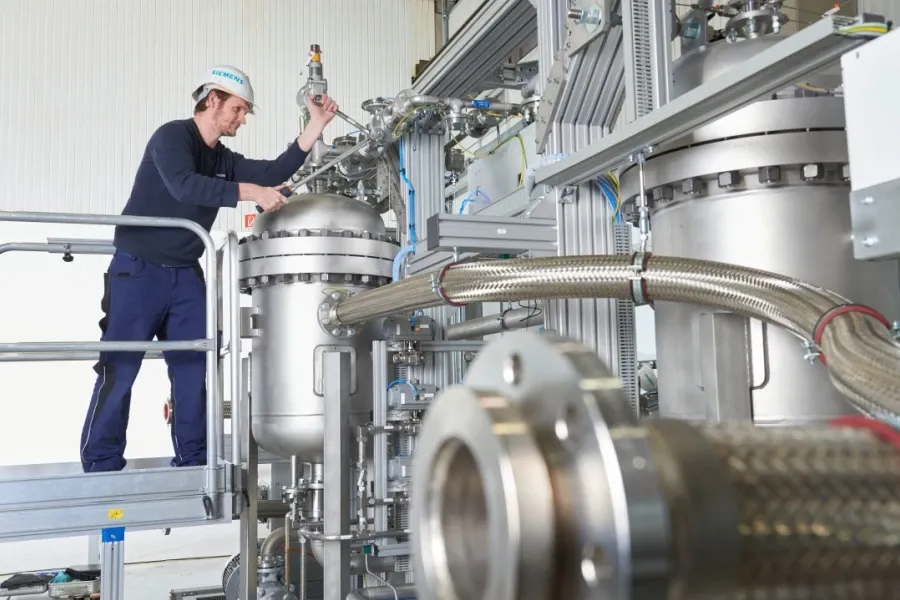Qualcomm Announces Snapdragon 8 Gen 5 Platform
Qualcomm added its latest smartphone platform to its premium-tier Snapdragon range.

An EU-funded project for a CO2-reduced energy future and the decarbonization of steel production is taking shape. At the site in Linz, the H2FUTURE consortium, consisting of voestalpine, Siemens, VERBUND, and Austrian Power Grid, with the research partners K1-MET and ECN, officially gave the go-ahead for construction of the world's largest pilot plant for the production of "green" hydrogen.
With a capacity of 6 megawatts, this is the most effective and advanced plant of its type. The partners from industry and power generation will use this facility to research into future breakthrough technologies which are needed to meet global climate goals over the long-term. The plant is scheduled to be fully operational by spring 2019.
Reducing CO2 emissions by around 80 percent to 2050 is the central climate goal, and requires both energy suppliers and industry to prepare themselves and explore new pathways together. This is the role of the H2FUTURE research project. More than 600 billion cubic meters of hydrogen are used annually worldwide, more than 95 percent of which is produced via a CO2-intensive process. What will be the world's largest and most advanced plant of its type for generating "green", i.e. CO2-free hydrogen, will be built at the voestalpine premises in Linz.
In future the EU-funded EUR 18 million project will be used to test the potential applications for green hydrogen in the various process stages of steel production, and integration into the power reserve markets for the power grid. For the industry, transport, and energy sectors, CO2-free hydrogen is an important source of energy for sector coupling and can significantly contribute to achieving the climate goals.
The new plant is designed to be a technological milestone on the pathway to the energy transition, and thus to the gradual decarbonization of the steel industry. After the launch of the project at the beginning of 2017, construction of the pilot facility at the voestalpine site in Linz has now accelerated.
The foundations are in place and construction of the hall is currently underway. The core electrolysis components will be delivered during the summer, with the plant going live within a year. The start of the comprehensive two-year test program is planned for spring 2019.
Siemens has developed what is currently the world's largest PEM (proton exchange membrane) electrolyser module for the research facility in Linz. With a capacity of 6 megawatts, the plant will be able to produce 1,200 cubic meters of "green" hydrogen an hour. The goal is to achieve a record output efficiency of 80 percent in converting electricity into hydrogen.
Only when water is electrolyzed using electricity from renewable sources can "green" hydrogen be produced. With its 128 hydropower plants, VERBUND, Austria's largest electricity company and a leading European hydropower electricity producer, generates almost 100 percent of its electricity from renewable sources. VERBUND will supply electricity generated from renewables for the H2FUTURE project, and is also responsible for the development of grid-relevant services.
The project volume for the new plant amounts to around EUR 18 million for six consortium partners over a project period of 4.5 years. Around EUR 12 million of this is funding from the European Commission, specifically from the Fuel Cells and Hydrogen Joint Undertaking.